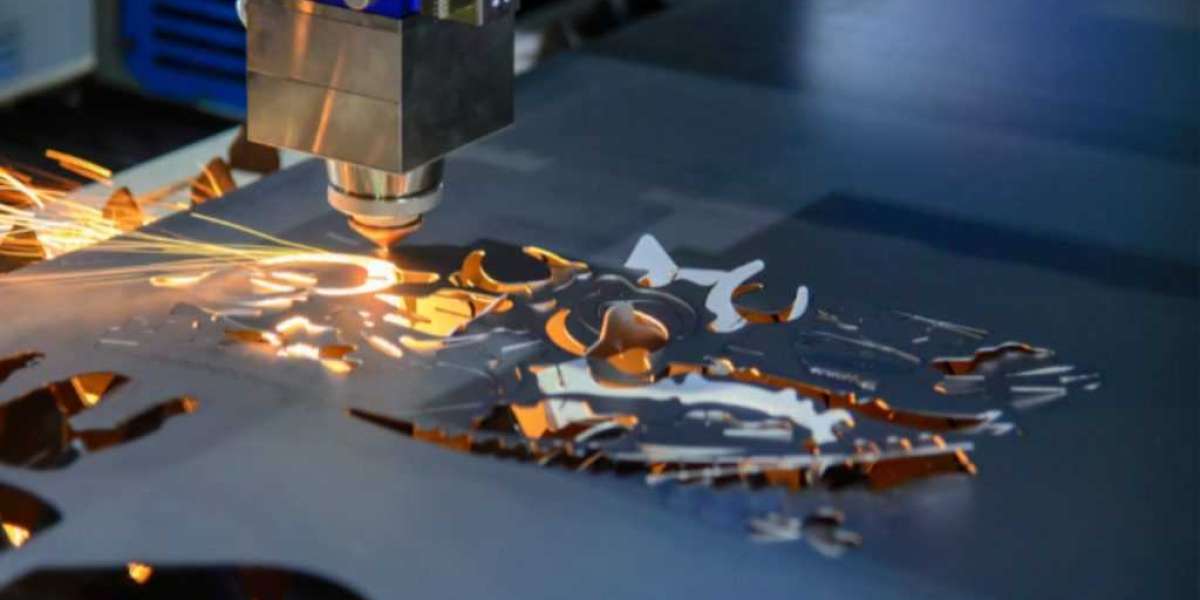Laser technology has become a cornerstone of modern industrial applications, transforming various sectors and redefining production processes across the globe. The versatility, precision, and efficiency that lasers offer have allowed industries to enhance product quality, speed up production timelines, and reduce costs, all while maintaining high standards. Laser application span a wide range of industries, including manufacturing, healthcare, automotive, electronics, and even the arts. This article delves into the intricacies of laser applications and explores how they impact production processes across different sectors.
Introduction to Laser Technology
Laser, which stands for Light Amplification by Stimulated Emission of Radiation, is a technology that produces a focused beam of light that can be precisely controlled. Unlike regular light sources, lasers emit light at a single wavelength, which gives them unique properties such as coherence, directionality, and high intensity. These properties make lasers an invaluable tool for a variety of applications, particularly in areas where high precision and accuracy are paramount.
Laser technology is employed in numerous fields, from the cutting and engraving of materials to intricate medical procedures. By harnessing the power of focused light, laser systems enable operators to manipulate and shape materials with incredible accuracy and speed. As a result, laser applications have become integral to many manufacturing and production processes.
Laser Cutting and Welding in Manufacturing
One of the most prominent laser applications in the industrial sector is in material processing, particularly laser cutting and laser welding. Laser cutting is used to slice through a variety of materials, including metals, plastics, and ceramics. The laser beam melts, burns, or vaporizes the material, leaving a clean cut with minimal heat-affected zones. This makes laser cutting particularly valuable for industries that require precise cuts with little material wastage.
Laser welding, on the other hand, uses a high-powered laser to join two or more pieces of material, often metals, by melting the edges of the materials and allowing them to fuse together. This process is essential in industries such as automotive and aerospace, where strong and reliable welds are crucial. The laser's precision ensures that the welds are uniform and accurate, even in tight or hard-to-reach areas.
The precision of laser cutting and welding has allowed for the mass production of complex parts with fine details. These processes have also reduced the need for additional finishing, as the cuts made by lasers are often smoother than those made by traditional methods, such as mechanical cutting or stamping.
Laser Engraving in Arts and Manufacturing
Another fascinating application of laser technology is laser engraving. This technique involves using a laser beam to etch or engrave patterns, logos, text, or designs onto various materials, including metals, wood, glass, and plastic. Laser engraving has become a popular method in the customization of products, from personalized gifts to industrial components. The level of detail that can be achieved with laser engraving is unparalleled, making it a preferred choice for industries where aesthetics and branding are important.
In manufacturing, laser engraving is used to mark serial numbers, barcodes, or part numbers on products. This is particularly useful in industries where tracking and quality control are critical, such as in the aerospace and electronics sectors. The permanence and precision of laser engraving ensure that the markings are both readable and durable, even in harsh environments.
Laser in Electronics Manufacturing
Laser technology plays a crucial role in electronics manufacturing, particularly in the production of semiconductors and circuit boards. Laser application in the electronics industry includes processes such as laser drilling, laser ablation, and laser micro-machining. These processes allow for the precise removal or modification of material in microelectronics, where traditional manufacturing techniques would be too imprecise.
For example, lasers are used to drill tiny holes in semiconductor wafers or to pattern delicate components on printed circuit boards (PCBs). The precision of lasers in such processes ensures that the final products are highly reliable and function as intended. Moreover, lasers can work with incredibly small components, something that would be difficult to achieve with mechanical tools. This has led to the development of more compact and efficient electronic devices, such as smartphones and laptops, with intricate circuit designs and components that fit into smaller spaces.
Laser Technology in Healthcare and Medical Devices
In the healthcare sector, laser technology has made significant strides, especially in the field of medical treatments and diagnostic tools. Laser applications in medicine include laser surgery, laser therapies, and diagnostic imaging. The precision of lasers allows for minimally invasive procedures with reduced risk of complications and quicker recovery times.
One notable application of lasers in medicine is in laser surgery, where high-powered lasers are used to remove or vaporize tissue. Lasers are commonly used in ophthalmology for procedures such as LASIK eye surgery, which reshapes the cornea to correct vision problems. Lasers are also used in dermatology for skin resurfacing, scar removal, and tattoo removal, offering patients a less invasive and more precise option than traditional surgical methods.
Laser technology is also used in diagnostic imaging, particularly in techniques such as laser-induced fluorescence (LIF), which helps in the detection of various diseases, including cancer. The non-invasive nature of laser-based diagnostics allows for early detection, which is critical for improving patient outcomes.
Laser Technology in the Automotive and Aerospace Industries
The automotive and aerospace industries have greatly benefited from the precision and efficiency of laser applications. In the automotive sector, lasers are used for cutting, welding, and engraving various parts of vehicles. For example, laser cutting is used to shape metal components, while laser welding is employed to join critical parts, such as car frames and body panels, with high precision and strength.
In aerospace, laser technology is used in the manufacturing of aircraft components, such as turbine blades and engine parts. The ability to cut and weld with extreme precision is critical in this industry, where even the smallest flaw can have catastrophic consequences. Lasers also play a role in the development of lightweight materials for aircraft, which are essential for improving fuel efficiency and performance.
Laser Applications in Textiles and Fashion
In the textile industry, laser applications are used for cutting and engraving fabrics. Laser cutting provides a highly precise method for cutting intricate patterns in fabrics, whether for fashion garments, upholstery, or industrial textiles. Laser engraving is also used to create unique textures and patterns on fabrics, offering a high level of customization for fashion designers and textile manufacturers.
The precision of laser technology in the textile industry allows manufacturers to produce complex designs with minimal material wastage. The use of lasers also speeds up production processes, as the cutting and engraving processes are faster compared to traditional methods. This has led to increased efficiency in textile manufacturing and greater design flexibility for fashion designers.
Laser in Research and Development
Beyond industrial applications, lasers are also extensively used in research and development. The ability to focus and manipulate light has led to significant advancements in fields such as material science, quantum computing, and nanotechnology. In material science, lasers are used to investigate the properties of materials at the atomic and molecular levels. This research has led to the development of new materials with enhanced properties, such as stronger alloys or more efficient semiconductors.
In quantum computing, lasers are used to manipulate and control qubits, the fundamental units of quantum information. The ability to precisely control the state of qubits with lasers is a key component of advancing quantum computing technologies. Lasers are also used in the study of nanotechnology, where they enable the manipulation of materials at the nanoscale, leading to innovations in fields such as drug delivery and electronics.
Conclusion
Laser applications have revolutionized various industries, from manufacturing and healthcare to electronics and aerospace. The precision, speed, and versatility of lasers have not only improved production processes but have also led to the development of new technologies and products. As laser technology continues to advance, we can expect even greater innovations and applications across diverse sectors. The role of lasers in modern production processes is a testament to the power of scientific innovation in shaping the future of industrial and technological progress.













